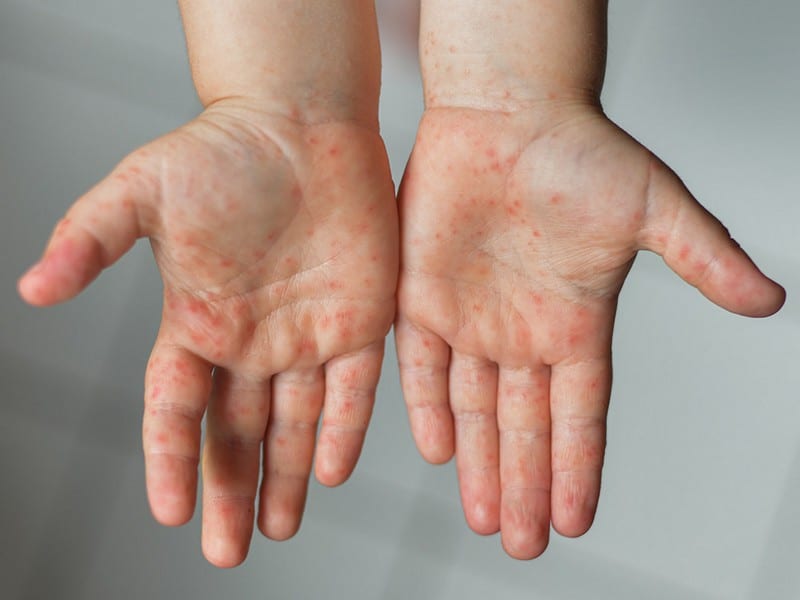Hand, Foot, and Mouth Disease

Hand, foot, and mouth disease is a viral infection that is highly contagious and prevalent in young children. It occurs due to viruses of the Enterovirus genus, most notably coxsackievirus.
These viruses can transfer directly from one person to another through contact with unwashed hands or feces-contaminated surfaces. Additionally, contact with a person’s saliva, respiratory secretions, or feces might spread. Blisters or sores in the mouth and rashes on the feet and hands are symptoms of HFMD. The virus can affect all ages, although children below five are most commonly affected.
Most of the time, hand-foot-and-mouth disease is a minor condition that resolves on its own in a few days. However, a person with this viral infection will show symptoms like fever, painful tongue, cheeks, and gum lesions that look like blisters, the feeling of being sick, and sore throat. They might also show symptoms like rashes that aren’t usually itchy on the soles, palms, and in rare cases, the buttocks.
The rash might present as tiny bumps, white, red, or gray, which depends on the skin tone. Loss of appetite and fussiness in children can also be observed in a person with hand-foot-and-mouth disease.










